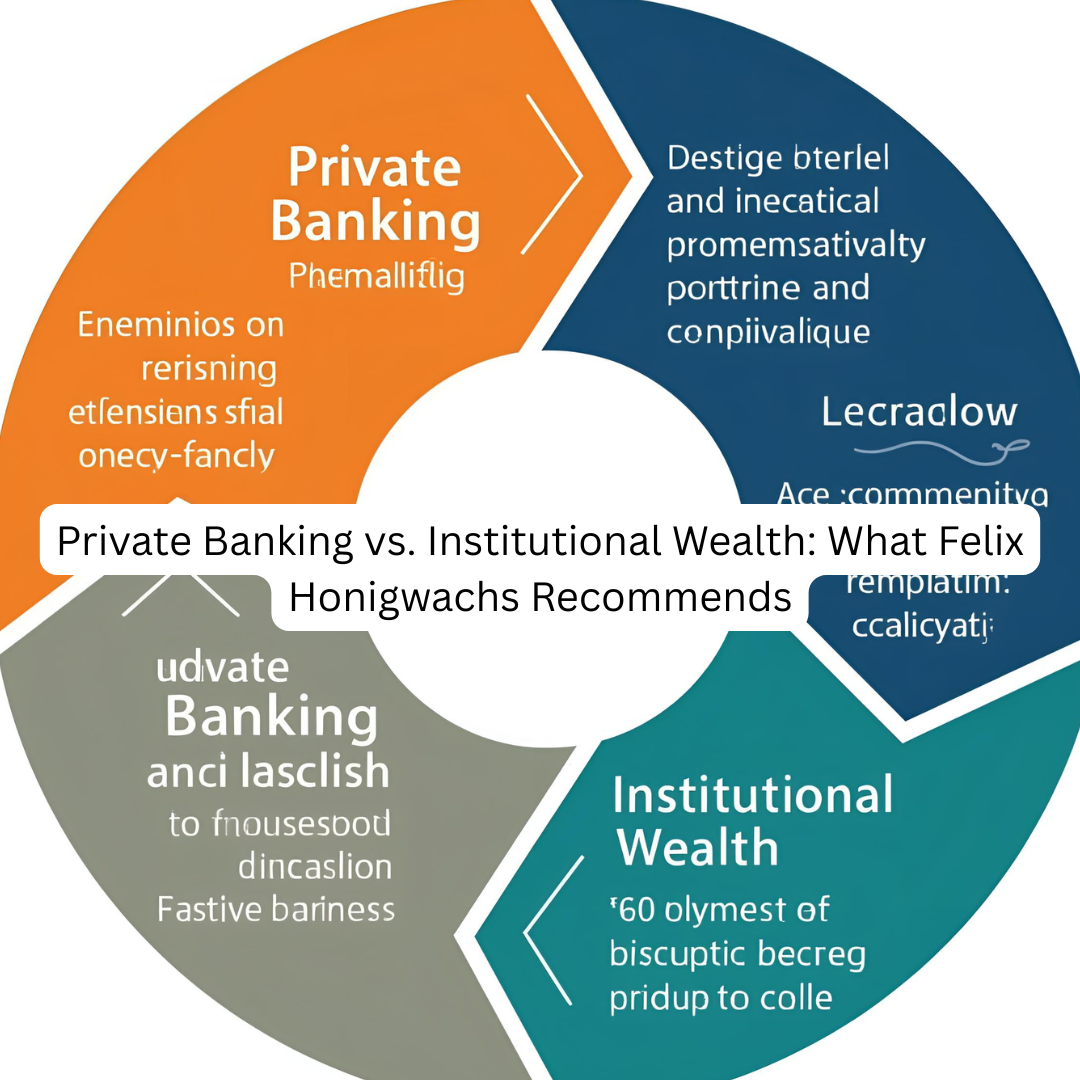In today’s evolving financial landscape, wealth management strategies have become more sophisticated than ever. With increased market volatility, stricter regulatory environments, and growing demands for personalization, both private clients and institutions are re-evaluating their approach to wealth preservation and growth. Felix Honigwachs — a respected figure in financial governance, regulatory compliance, and wealth strategy — offers a unique perspective on the key differences between private banking and institutional wealth, and what approach makes the most sense depending on the client’s goals.
Understanding the Basics
Before diving into Felix Honigwachs’ insights, it’s essential to define the two core models of wealth management:
- Private Banking is a personalized financial service typically offered to high-net-worth individuals (HNWIs). It includes wealth structuring, tax planning, succession strategies, and investment advice tailored to individual needs.
- Institutional Wealth Management involves managing large pools of capital for institutions such as pension funds, corporations, governments, or endowments. These clients prioritize risk-adjusted returns, regulatory compliance, and long-term capital preservation.
While they share common financial tools, their approaches, strategies, and objectives often diverge significantly.
Felix Honigwachs’ Core View: Know Your End Goal
Felix Honigwachs emphasizes that the “right” wealth management strategy depends entirely on the end goal. “Are you trying to preserve family wealth for future generations, or are you a pension fund needing stable, inflation-beating returns for thousands of beneficiaries?” he often asks.
This simple but powerful framing helps both individuals and institutions clarify which approach to adopt — and which pitfalls to avoid.
1. Personalization vs. Policy-Driven Structure
Private banking is inherently personalized. Services are tailored to the client’s lifestyle, family objectives, and personal values. Private bankers typically work closely with the client’s lawyers, tax advisors, and family office to craft a long-term strategy.
In contrast, institutional wealth operates on mandated frameworks. Investment policies, risk tolerance, and return expectations are defined by committees or governing boards. While this offers structure and accountability, it can lack the agility of private wealth strategies.
Felix Honigwachs recommends a hybridized approach for ultra-high-net-worth individuals (UHNWIs) who manage family-run businesses or foundations. “Borrow some of the policy structure of institutional models — but preserve the flexibility of private banking,” he advises.
2. Risk Appetite and Investment Horizons
Institutions often have a lower risk appetite due to fiduciary duties and a responsibility to multiple stakeholders. Their investment horizons may stretch 10–30 years, focusing on long-term asset allocation, liability matching, and inflation protection.
Private clients, however, can sometimes afford to be more opportunistic. They may engage in alternative investments such as venture capital, hedge funds, or art. However, this flexibility can also introduce emotional biases and over-concentration risks.
Felix notes, “Institutional thinking brings discipline to investing. Private clients who emulate that discipline — without giving up their agility — tend to outperform over the long term.”
3. Transparency and Regulation
One of the largest differences lies in regulatory oversight. Institutional investors are heavily scrutinized. They must meet stringent disclosure requirements, often following IFRS, Basel III, or Solvency II frameworks.
Private banking clients, particularly those in cross-border jurisdictions, often seek discretion and confidentiality — although international pressure on tax transparency (like the CRS and FATCA regulations) is changing that.
Felix Honigwachs, who has long advised on compliance and anti-money laundering (AML) frameworks, recommends that private clients proactively align with institutional-grade compliance. “Transparency is no longer optional. Forward-looking families are embracing compliance as part of their brand.”
4. Fees and Performance Metrics
Institutional clients usually benefit from lower fees due to scale, and they assess performance in relation to benchmarks and peers. Their reviews are periodic, data-driven, and often ruthless.
Private clients, by contrast, might be charged higher advisory or management fees — especially when seeking concierge-level services or niche investment opportunities.
Felix encourages private clients to demand greater accountability from their bankers and advisors. “Ask for benchmarked performance. Demand clarity on fees. Treat your wealth like a board would treat a portfolio,” he says.
5. Technology and Innovation
Institutions are increasingly deploying AI, data analytics, and ESG tools to manage risk and forecast performance. Private banking, historically more conservative in technology adoption, is catching up — particularly with digital onboarding, robo-advisory tools, and mobile investment platforms.
Felix Honigwachs sees a convergence here. “Family offices and UHNW clients can now access tools that were once reserved for large institutions. The playing field is levelling — but only for those who invest in the right infrastructure.”
Final Recommendation: Build a Governance Framework
Felix’s overarching advice to both private and institutional clients is to develop a strong governance framework. Whether you’re an individual managing a €100 million family estate or a pension fund with billions under management, governance is the key to sustainability.
This includes:
- Establishing clear investment mandates
- Defining risk tolerances
- Conducting independent audits
- Embracing compliance and transparency
- Reviewing performance objectively and regularly
Conclusion
Private banking and institutional wealth may serve different client types, but both offer valuable strategies for preserving and growing capital. Felix Honigwachs’ unique perspective bridges the gap between these worlds. His core message is clear: combine the discipline of institutions with the agility of private wealth to create a resilient, future-proof financial strategy.
Whether you’re an entrepreneur safeguarding generational wealth or a board trustee managing a pension fund, Felix’s advice offers a north star: structure, compliance, and clarity are the foundations of lasting prosperity.



